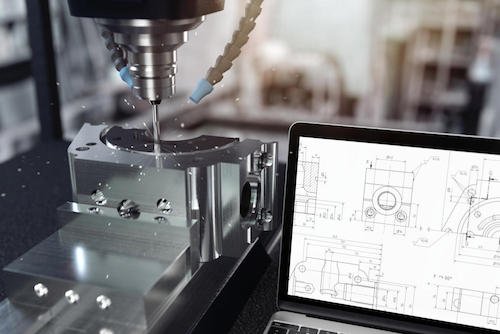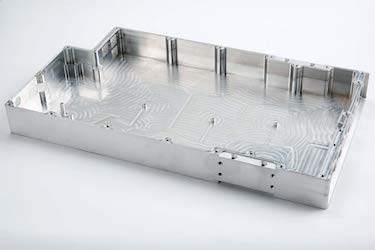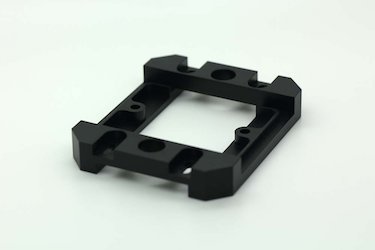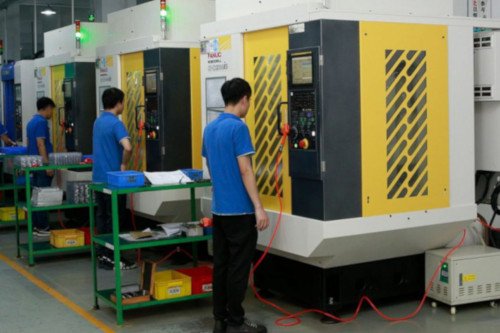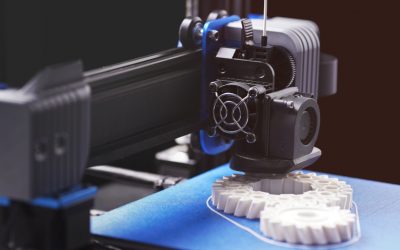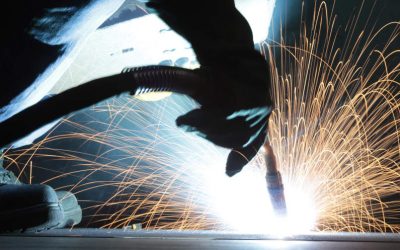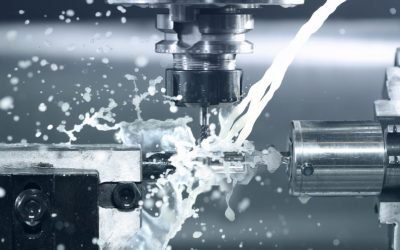Have you recently come up with a product (or part) design, or do you have a new product idea that you believe will be the next big thing? If so, you’d agree that prototyping is a vital process in the product development process; it allows you to discover design flaws early and determine the fit and durability of the product.
But before you take the plunge with prototyping, a significant decision you likely need to make is to choose a suitable manufacturing method for your prototype designs. You want an affordable manufacturing process that offers a short lead time without compromising the prototype parts’ quality.
That’s why we’ve put together a comprehensive guide to help you successfully manufacture your prototype parts. This article presents four common methods for rapid prototyping and tips to help you choose the right one. It will also provide helpful design tips for rapid prototyping metal and plastic parts.
4 Common Methods for Rapid Prototyping
#1 CNC Machining
CNC machining has always been a popular method of creating prototypes. For example, as of 2007, when Apple was ditching polycarbonates for aluminum, they used CNC machines to create prototypes of the MacBook’s enclosure from a block of aluminum.
CNC machining is a manufacturing process that utilizes computerized controls to determine the movement of cutting tools and remove material from a workpiece till the desired custom part is made.
CNC machining offers an extremely tight tolerance of up to ±4 μm. Additionally, its broad range of material compatibility means that you can work with pretty much any metal or plastic, provided that you have them in blocks. (Related Post: Should You Use CNC for Rapid Prototyping? The Advantages and Disadvantages)
#2 3D Printing
3D printing and CNC machining are similar because they rely on 3D CAD models and computer instructions to create prototype parts automatically. But unlike the subtractive nature of CNC machining, 3D printing is an additive manufacturing process — it builds prototype parts from scratch by depositing materials in layers.
3D printing technologies include Stereolithography (SLA), Fused Deposition Modeling (FDM), and Selective Laser Sintering (SLS), all of which have a minimum feature size ranging between 0.25 mm and 0.8 mm. This size range is more than accurate enough for the vast majority of prototyping requirements.
#3 Urethane Casting
Urethane casting, sometimes referred to as vacuum casting, uses silicone molds to produce plastic prototype parts under vacuum. This casting process typically starts with the creation of a master pattern using CNC machines or 3D printers. Liquid polyurethane is then poured into the mold to create copies of the prototype design.
#4 Rapid Injection Molding
Rapid injection molding (RIM) is technically only a quicker version of conventional injection molding. Like urethane casting, the RIM process takes advantage of fast CNC machining to create mold cavities, allowing you to produce complex parts and features.
How Do You Choose the Right Manufacturing Method?
CNC machining, 3D printing, urethane casting, and rapid injection molding all offer several advantages. The right choice typically depends on:
- The mechanical properties you hope to get
- The volume of prototype parts you need
- Your budget
- Lead time
- Material compatibility
You should opt for CNC rapid prototyping if you’re looking for a mix of quality, short lead time, affordability, and a wide range of material compatibility. CNC machining is also ideal for creating large volumes of prototypes with desirable mechanical properties. However, this subtractive manufacturing process is associated with material wastage.
3D printing eliminates the material wastage challenge in CNC machining and offers high-quality surface finishes. But it comes with the drawback of high cost and limited material options. 3D printing technology is only compatible with thermoplastics (such as ABS, nylon, PLA, ULTEM) and a few metals like tool steel, stainless steel, titanium, and aluminum. (Related Post: Aluminum Prototype Manufacturing: How do You Determine the Best Method)
Urethane cast and injection molded parts combine the structural integrity of CNC machined parts and the excellent surface finishes of 3D printed parts. They are also quite affordable, especially if you’re looking to fabricate large runs of plastic prototypes.
However, urethane casting and rapid injection molding usually have longer lead times than 3D printing and CNC machining. As a rule of thumb, you should use these methods if you’re looking to create 100 or more identical plastic prototype parts.
Tips for Rapid Prototyping Metal Parts
The following tips will help you with rapid metal prototyping.
- Use CNC rapid prototyping for metal parts unless you have recessed features in your design that may be inaccessible by CNC machines.
- Use 3D printers to fabricate prototypes with recessed features that would otherwise be challenging to create using CNC machines.
- Design your cavities such that the ratio of cavity depth to width is less than 4, as this will help you eliminate excessive vibration and tool deflection during CNC machining.
- Design your metal prototype parts with a wall thickness greater than 0.8 mm since thin-walled metals are prone to deformation during CNC machining.
- Outsource the manufacturing process to a top-tier machine shop to save time and reduce manufacturing costs.
Tips for Prototyping Plastic Parts
Although 3D printing, injection molding, and urethane casting remain the most popular methods for prototyping plastic parts, CNC machining might be a better alternative for certain scenarios. For example, CNC machining is ideal if your design features tiny details or you’re trying to work with specialty plastics like PVC, PEI, and PEEK. (Related Post: CNC Machining Plastic Prototypes: Is It the Best Choice?)
Nevertheless, if you intend to use 3D printing for prototyping plastic parts, the following design tips will help you reduce costs and successfully manufacture your prototype parts.
- Make bulky parts hollow, especially for non-functional prototype parts that you will use for visual representation.
- Reduce support structures in your design since it uses more material and increases 3D printing time.
- Choose a third-party manufacturer with state-of-the-art 3D printing technology, highly qualified technicians, and quality control experts.
Prototype Parts Manufacturing with Gensun Precision Machining
Gensun Precision Machining has been in business for nearly two decades providing high-quality prototyping services to many innovative companies. Our rapid prototyping services include CNC machining, 3D printing, rapid injection molding, and urethane casting.
Depending on the prototype design and volumes of parts you need to manufacture, we can help you determine which prototyping method to use and create the prototype parts you need.
Learn more about our rapid prototyping services.

